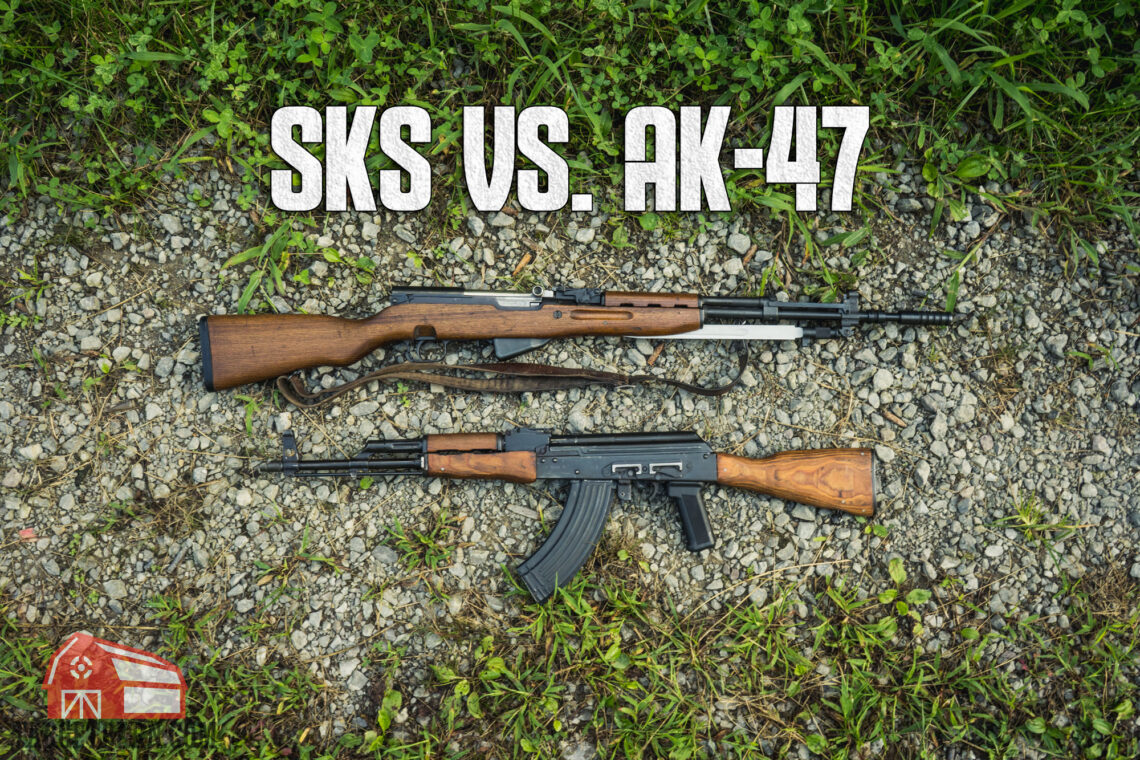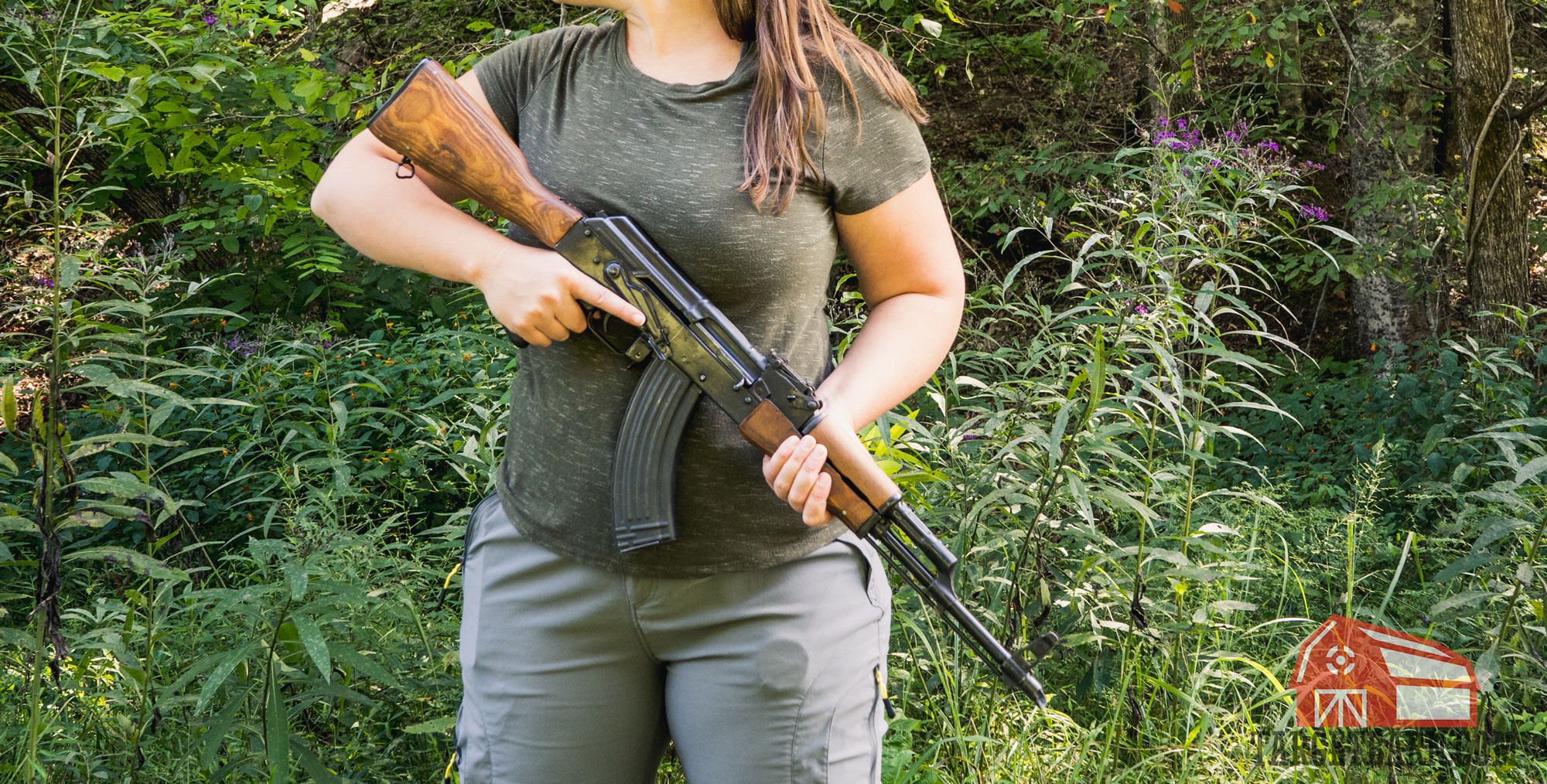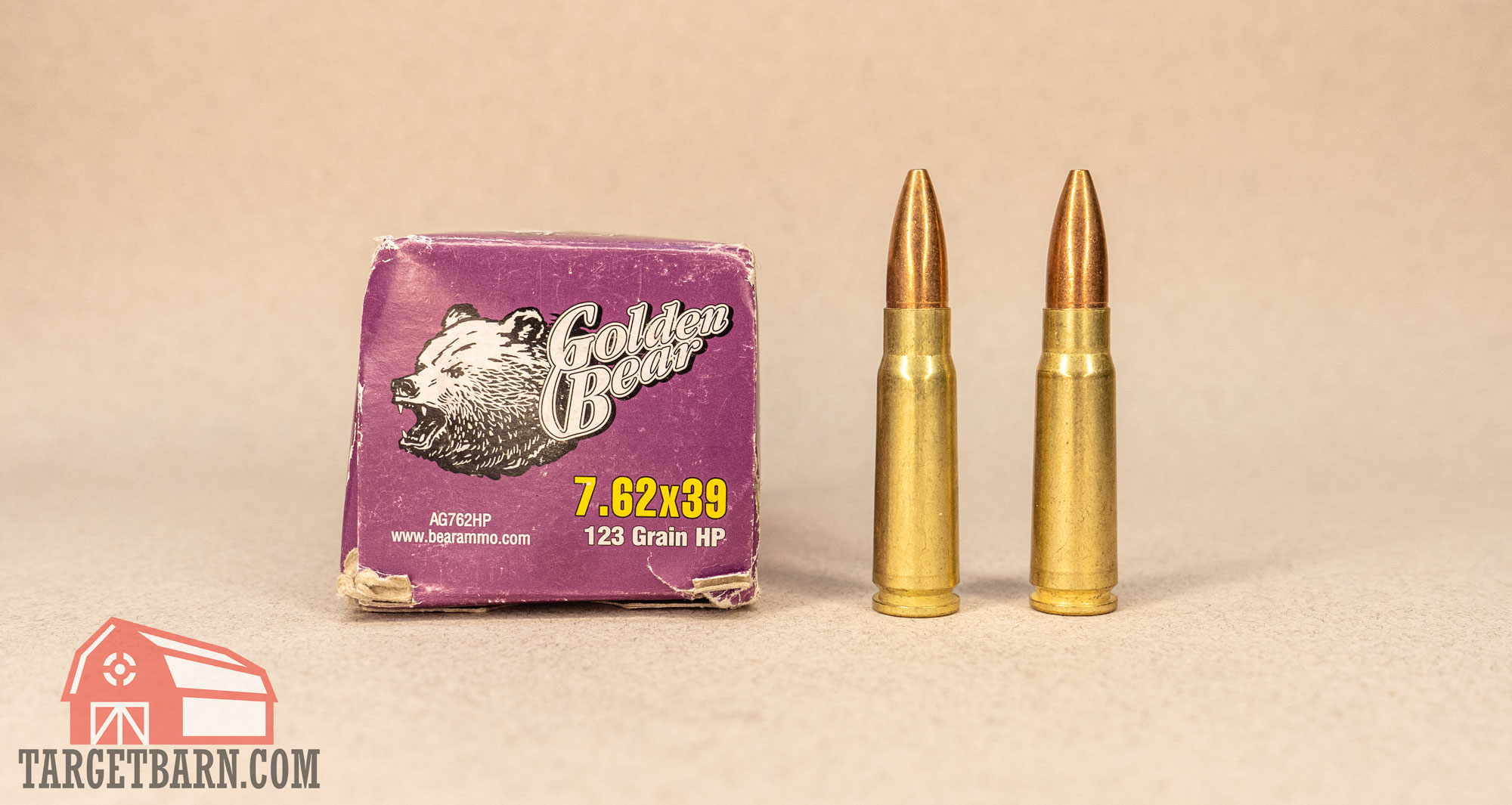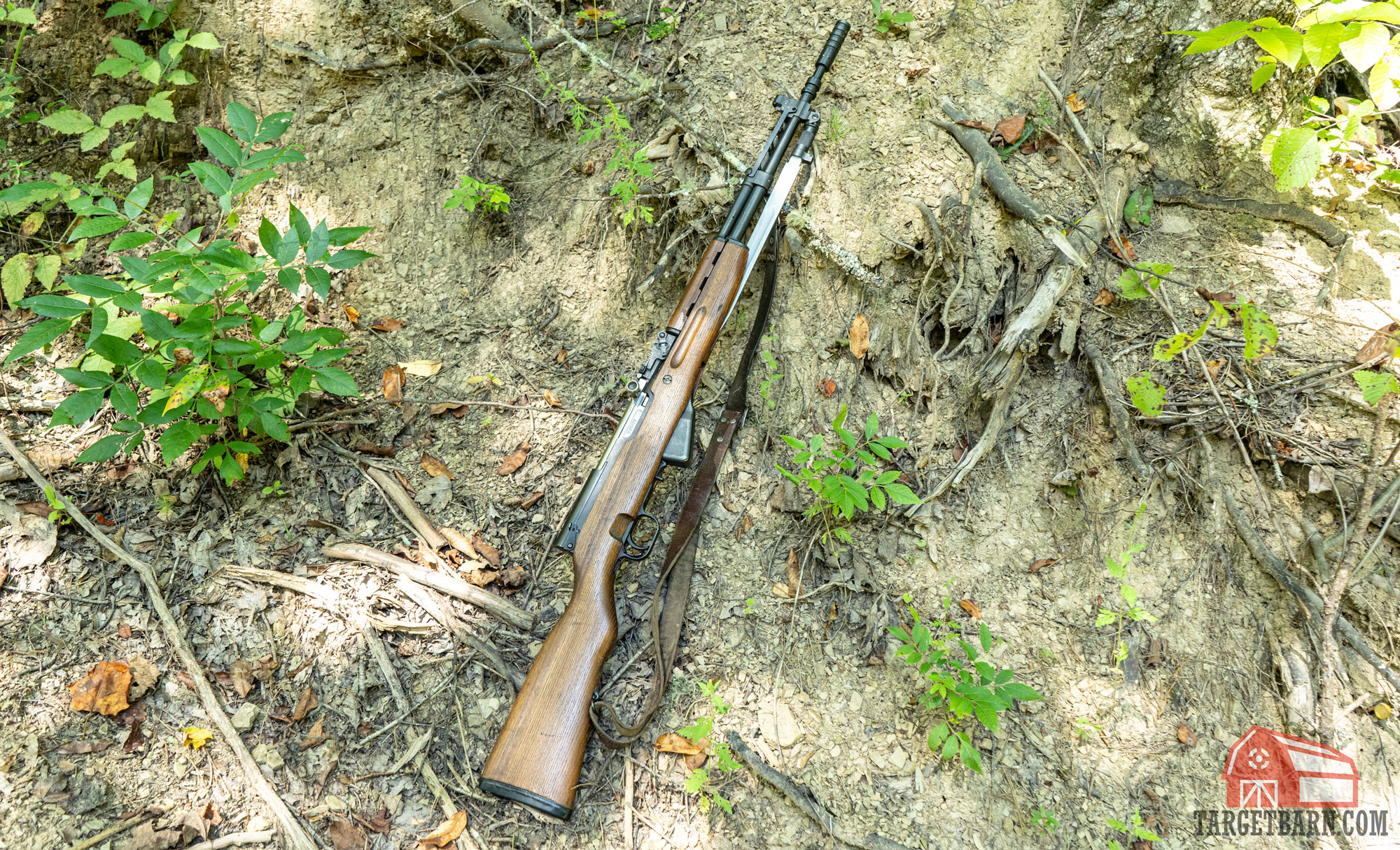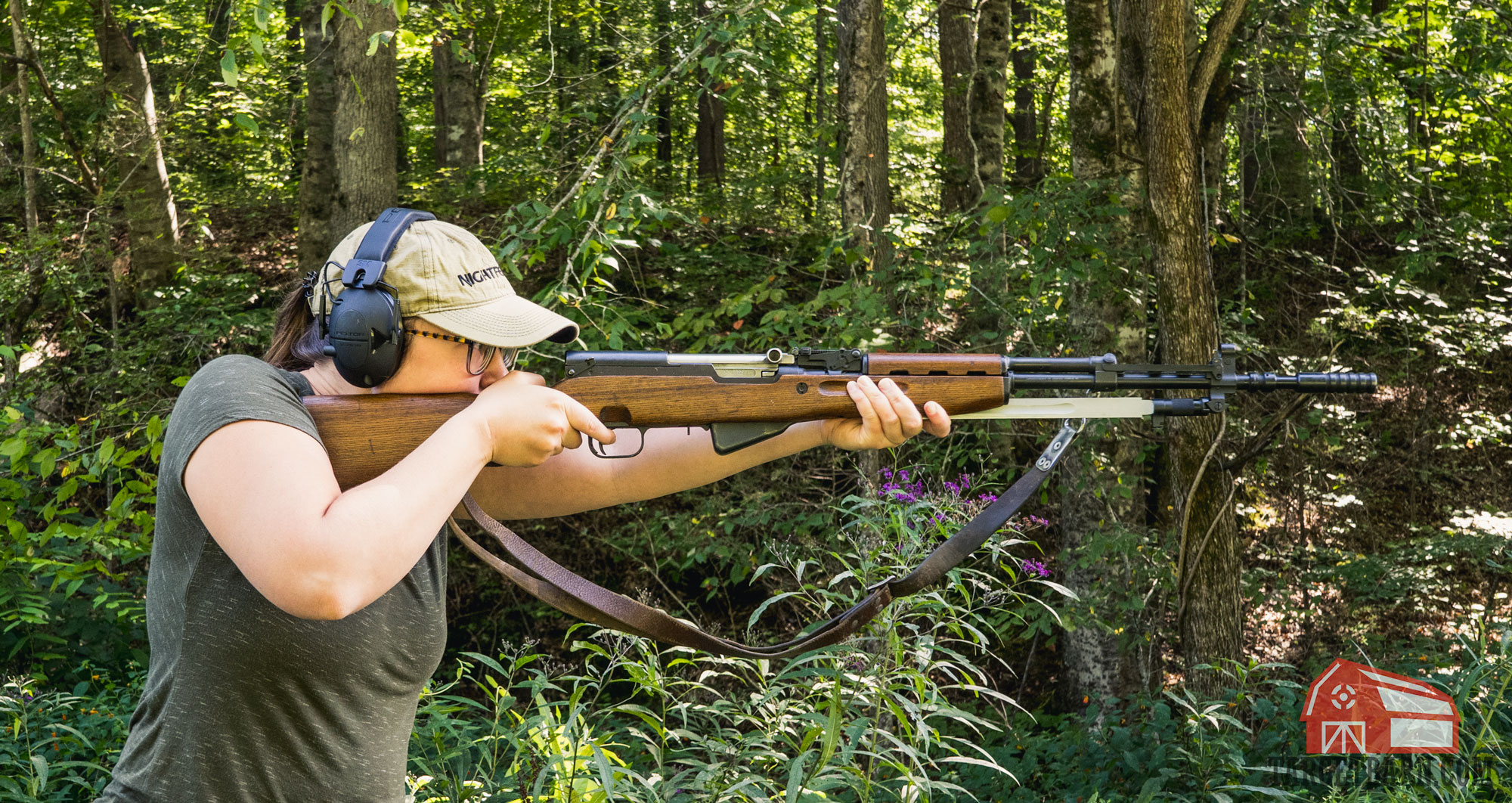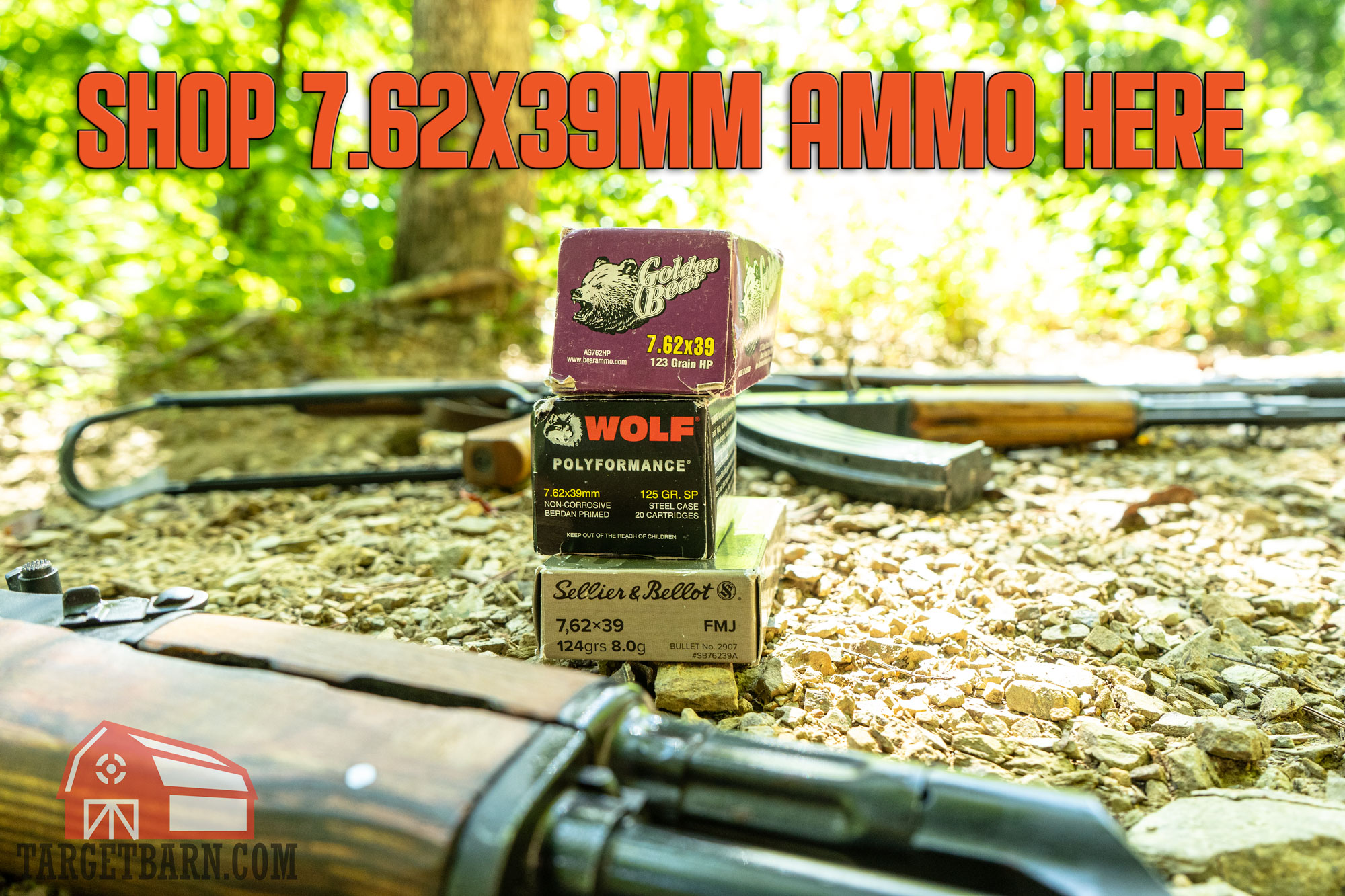If you’ve ever browsed your local gun shop or gun show, you’ve likely come across two examples of Soviet firepower: the SKS vs. AK-47.
Both of these Soviet-born rifles are chambered in the same 7.62x39mm cartridge and have gained popularity among U.S. gun collectors and enthusiasts since the late 80s.
Today, we’re taking a look at the differences between the SKS vs. AK-47.
SKS vs. AK-47 Specifications
| SKS | AK-47 | |
|---|---|---|
| Caiber | 7.62x39mm | 7.62x39mm |
| Type | Semiautomatic Rifle | Assault Rifle |
| Designed | 1945 | 1946-1948 |
| Designer | Sergei Gavrilovich Simonov | Mikhail Kalashnikov |
| Place of Origin | Soviet Union | Soviet Union |
| In Service | 1945-present | 1949-1974 (Soviet Union) 1949-present (other countries) |
| Action | Short strike gas piston, tilting bolt, self-loading | Gas-operated, closed rotating bolt |
| Effective Firing Range | 440 yards | 380 yards |
| Weight | 8.5lbs | 7.7lbs |
| Barrel Length | 20” | 16.3” |
| Overall Length | 40” | 35” |
Both the SKS and AK-47 have Russian origins and are chambered in the same caliber, but they have totally different purposes.
Some quick facts about the SKS vs. AK-47:
- The SKS has a longer sight radius, which can result in improved accuracy over the AK-47.
- Both rifles shoot 7.62x39mm ammo.
- The original AK-47 is a fully automatic rifle while the SKS is a semiautomatic rifle.
- The AK-47 accepts detachable magazines, with the standard magazine having a 30-round capacity; the SKS has an integral magazine that accepts 10-round clips.
- The SKS has a longer barrel length and overall length than the AK-47.
- The AK-47 is known for its reliability, but the SKS is also a reliable rifle.
Now, let’s take a closer look at the specifications and differences between the SKS vs. AK-47.
SKS Specifications
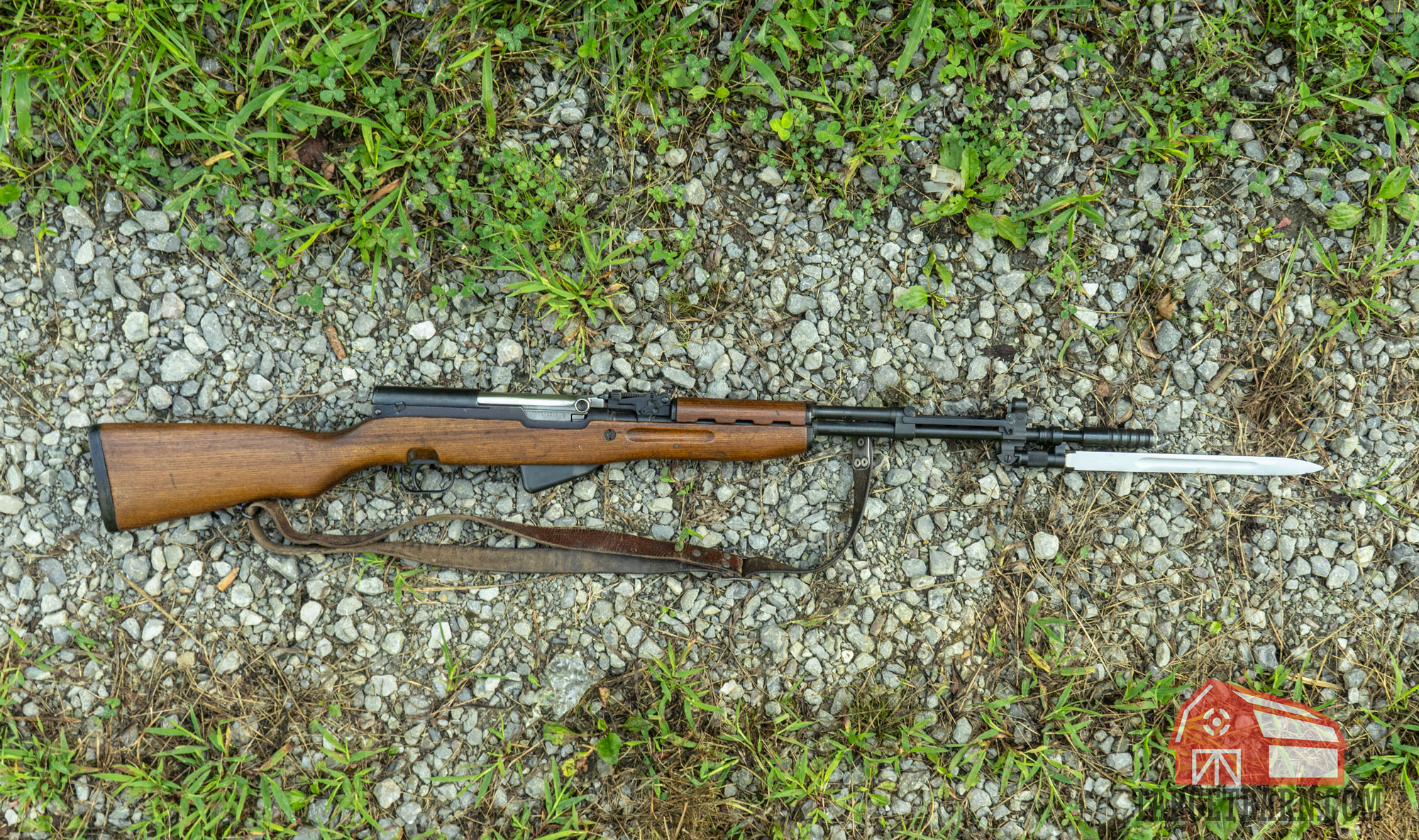
The SKS is a gas-operated, semi-auto rifle chambered in 7.62x39mm. Coming in at 8.5 pounds, the SKS has a barrel length of 20-inches and overall length of 40-inches, though there are variants like the Chinese Paratrooper SKS that have a shorter barrel length. It uses a 10-round integral magazine box that accepts stripper clips. As for sights, its front sight is a hooded post and its rear sight is an open notch, with adjustments from 110 to 1090 yards.
One of the SKS carbine’s most notable features is the bayonet attached to the underside of the barrel, which extends and retracts via a spring-loaded hinge.
There are many variants of the SKS that are available, usually with small differences that only serious collectors recognize.
AK-47 Specifications
The AK-47 is a gas-operated, closed rotating bolt assault rifle chambered in 7.62x39mm. It is originally an automatic weapon, but unless you’re specifically looking for an NFA item, you’ll most likely run across semi-automatic AK-47s in the US.
It weighs 7.7 pounds without its detachable 30-round magazine inserted. The notched rear iron sight has adjustments from 109 to 875 yards. Its front sight is a post with adjustable elevation.
Original AK-47s featured a buttstock, handguard, and upper heat guard made of solid wood, though later versions used laminates. Variants like the AKS and AKMs use a foldable, metal buttstock for carrying in tight spaces like a tight combat vehicle. When configured with a fixed wooden stock, it has an overall length of 35 inches, with a 16.3-inch barrel.
The first models used stamped receivers, though production issues led to milled models being produced for around a decade. When the manufacturing issues were resolved in 1959, the Russians introduced the new, redesigned version designated as the AKM. The AKM used a stamped sheet metal receiver and was lighter than previous models.
You’ll find many variants of the AK-47, with many countries friendly to the Soviet Blac producing their own variants.
SKS vs. AK-47 History
The Soviet Union was ready to modernize its weaponry after WWII, replacing the bolt action Mosin Nagant and the PPSh-41 submachine gun. The country sought out a cartridge that could run in carbines, light machine guns, and select-fire rifles.
Let’s take a closer look at the development of the SKS vs. AK-47.
The 7.62x39mm M43 Cartridge
In 1943, the Soviet Union developed the 7.62x39mm M43 cartridge. This intermediate cartridge originally used a 123 grain boat tail bullet with a large steel core and copper-plated steel jacket. The tapered case was typically composed of steel and used a Berdan primer. The 7.62x39mm cartridge has muzzle velocities around 2300fps, dependent on barrel length.
Despite a round being selected, it took six years for the Soviets to formally adopt the new guns in the caliber.
SKS History
With the M43 cartridge selected, gun designers began working on new designs to fill the three gun categories. It was Sergey Simonov’s SKS-45 design that the Red Army chose as its winner in 1946. After some extended trials, the Soviets officially adopted Siminov’s carbine as the Samozaryadny Karabin sistemy Simonova, or Self-loading Carbine of Simonov.
The USSR sold manufacturing licenses for SKS in the 1950s to some socialist countries. This included East Germany, People’s Republic of China, and Yugoslavia, which all made their own variants.
AK-47 History
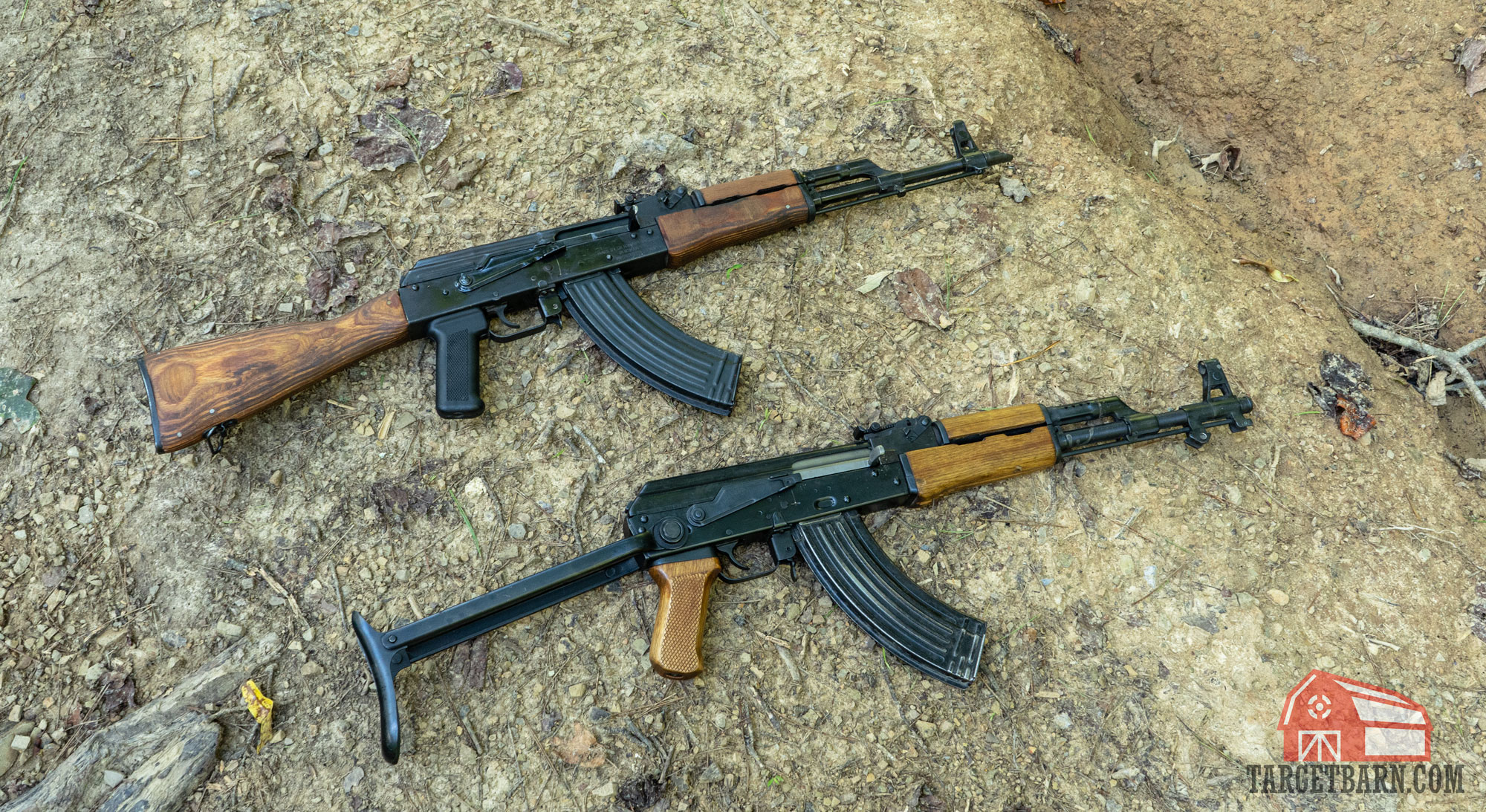
After World War II, the Soviets were looking to replace their outdated PPSh-41 submachine guns. The Soviets were impressed with the German Sturmgewehrr 44 assault rifle, and sought out a new design of their own.
A Russian T-34 tank commander, Sgt. Mikhail Kalashnikov, was in the hospital recovering from a wound received in the Battle of Bryansk when a fellow soldier quipped about their limited firepower. The Germans carried the MP 40 submachine guns that outperformed the firepower the Soviets were armed with. It was this conversation that set the stage for Kalashnikov to design a new submachine gun, which he began in 1942.
Early in 1944, Kalashnikov received the 7.62x39mm M43 cartridge that the Soviets had selected, and in that same year, entered into the rifle design competition. His initial design, a gas-operated, long-stroke piston carbine with a fixed magazine, lost out to Simonov’s SKS design. This didn’t stop Kalashnikov, however.
A new design competition kicked off in 1946, and Kalashnikov submitted his latest design, a gas-operated, short-stroke gas piston with a curved, detachable 30-round magazine. Making it to the next stage of competition, Kalashnikov and his assistants continued to improve upon the design. In November of 1947, Kalashnikov completed the new AK-47 prototypes. The new AK-47 used a long-stroke gas piston above the barrel and had a single receiver, as opposed to separate upper and lower receivers. In 1949, the Soviet Army adopted the 7.62 mm Kalashnikov rifle, otherwise known as the AK-47.
SKS vs. AK-47 Market
The U.S. first saw the SKS carbine when soldiers brought them back as trophies from the Vietnam War. During this time, the SKS and the 7.62x39mm were rare finds in the country, and more of a collector’s item. Beginning in the late 80s, SKS carbines and ammo were imported from China and Russia. The U.S. also saw imports of Yugoslavian, Romanian and Albanian guns before new laws prevented new imports of the carbine.
When the SKS was widely available in the U.S., it could be found for as cheap as $100. However, the days of the $100 SKS are long over. According to Rock Island Auction, the average price of the Norinco SKS from their records was $679 in 2022. Of course, you’ll find different prices depending on the variant and its condition. If you’re looking for an affordable SKS, you can likely still find the more common Chinese variants below $500 if you look in the right places.
More than 88,000 AK-47s were imported to the US between 1985 and 1988, many being Chinese variants. President George H.W. Bush banned imports of rifles deemed not to have a “legitimate sporting use,” which ceased the importation of new Ak-47s. While imports are banned, several US-based firearm manufacturers, like Kalashnikov USA and Riley Defense produce AK-47s for civilians.
SKS vs. AK47: Which Rifle is Better?
If you’re choosing between the SKS vs. AK-47, it’s hard to go wrong with either choice. Ultimately, you need to decide what features you prefer the most or what the rifle’s purpose will be.
The SKS will have a slight accuracy advantage over the AK-47, though it comes at the disadvantage of not using detachable magazines. The AK-47 has a large aftermarket support that the SKS doesn’t. Shooters who live in states with restrictive gun laws likely won’t be able to legally own an AK-47, making the SKS a feasible defensive gun option. If it’s a combat rifle you’re looking for, there’s no doubt that the AK-47 is the superior choice, with estimates of 100 million AK-47s having been produced.
Whichever Russian rifle you choose, be sure you’re stocked up on quality 7.62x39mm ammo like the PMC Bronze 7.62x39mm 123gr. FMJ.

